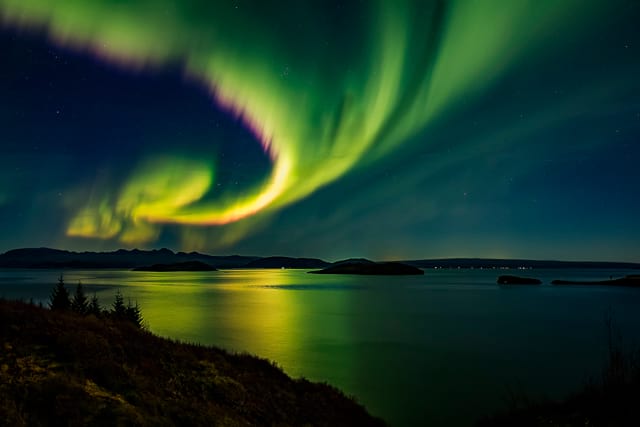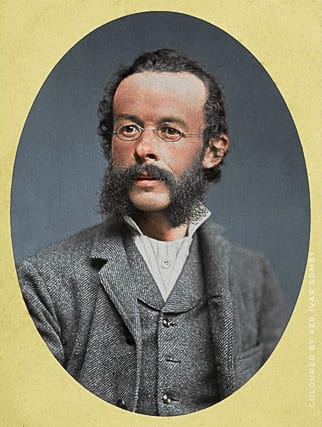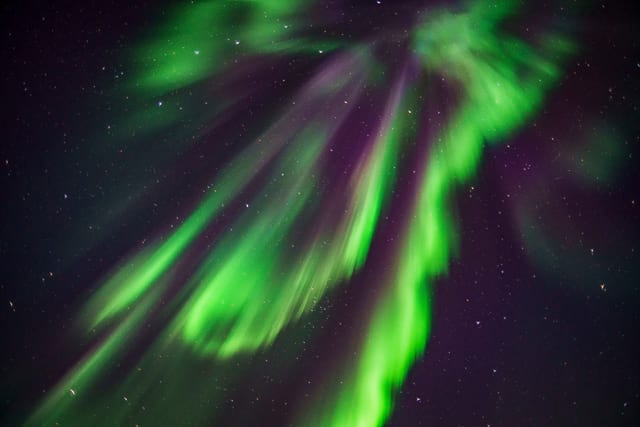Northern Lights in Iceland: The Captivating Dance of Nature
Experience the Enchanting Aurora Borealis in Iceland
Introduction
Imagine standing in the darkness of the Icelandic night, gazing up at the sky as it comes alive with a mesmerizing display of vibrant colors. The enchanting dance of the Northern Lights, also known as the Aurora Borealis, is a captivating natural phenomenon that has fascinated people for centuries. In this article, we delve into the captivating world of the Northern Lights in Iceland, exploring the history, science, and awe-inspiring beauty of this celestial spectacle. Join us on a journey through time and space as we uncover the secrets of the Northern Lights and discover why Iceland is one of the best places on Earth to witness this breathtaking display.
The First Glimpse: Sophus Tromholt and His Pioneering Work
In the late 19th century, a Danish man named Sophus Peter Tromholt embarked on a quest to unravel the mysteries of the Northern Lights. As an amateur photographer, school teacher, and astrophysicist, Tromholt dedicated his life to studying and documenting this awe-inspiring phenomenon. His groundbreaking work not only led to the first-ever photographs of the Northern Lights but also contributed significantly to our understanding of this celestial phenomenon.
Born in Denmark in 1851, Tromholt's passion for the Northern Lights took him on numerous expeditions to countries such as Norway, Finland, and Iceland. It was during his time in Iceland that he made history by capturing the first-ever photograph of the Northern Lights in October 1882. Although the photograph may not compare to the high-resolution images we have today, it still stands as a testament to Tromholt's pioneering spirit and unwavering dedication.

Image: Northern Lights above in Iceland
Northern Lights Center in Kautokeino: A Scientific Oasis
Tromholt's passion for the Northern Lights extended beyond photography. In 1882-1883, he established the scientific Northern Lights center in Kautokeino, a municipality in the Troms og Finnmark county of Norway. This center served as a hub for researchers and enthusiasts alike, providing a platform for the study and observation of the Northern Lights.
The center in Kautokeino became a focal point for understanding the aurora borealis, and Tromholt's research significantly contributed to our knowledge of this celestial phenomenon. His meticulous observations and scientific inquiries laid the foundation for future studies, allowing scientists to delve deeper into the mysteries of the Northern Lights.
Chasing the Lights in Iceland: Tromholt's Ambitious Experiment
Tromholt's insatiable curiosity led him to Iceland in 1884, where he aimed to not only observe the Northern Lights but also conduct an audacious experiment. His plan was to attempt to control the appearance of the lights, an idea that seems far-fetched today but was a testament to Tromholt's adventurous spirit and determination.

Image: Sophus Tromholt, the first photographer of the Northern Lights
Mount Esja: The Stage for Tromholt's Experiment
For his experiment, Tromholt chose Mount Esja as the location due to its strategic features - great height, a steep fall into the sea, and its proximity to the city. Mount Esja provided the perfect vantage point to observe and potentially manipulate the Northern Lights.
However, Tromholt's ambitious plans were thwarted by the unpredictable Icelandic weather. In his notes, he described the unfavorable conditions he encountered during his first visit to Iceland, with cloudy skies, rainfall, snow, and relentless storms. These challenging weather conditions made it impossible for him to conduct his experiment successfully.
The Second Attempt: A Glimmer of Hope
Undeterred by his initial setback, Tromholt returned to Iceland in February 1884 for a second attempt at his audacious experiment. This time, he was met with better weather conditions - clear skies, no wind, and a comfortable temperature. With the help of 16 dedicated individuals, Tromholt embarked on his mission to control the Northern Lights.

Image: Aurora Borealis dancing in the sky
A Glimpse of Success: A Ray of Light in the Darkness
On February 25th, 1884, Tromholt and his team ascended Mount Esja, carrying all the necessary equipment for their experiment. They laid out telegraph wire, connecting it with two zinc disks - one placed in a small waterfall and the other buried in the earth. Tromholt hoped that these connections would somehow influence the appearance of the Northern Lights.
Unfortunately, the weather once again turned against them, and the experiment could not be completed. Nevertheless, Tromholt's audacious attempt to control the Northern Lights remains a testament to his unwavering determination and his relentless pursuit of knowledge.
The Science Behind the Lights: Nature's Dazzling Performance
While Tromholt's experiment may not have yielded the desired results, today we understand that the appearance of the Northern Lights is a natural phenomenon driven by scientific principles. The lights occur when energy and small particles travel down magnetic field lines to the Earth's poles, where they interact with gases in the atmosphere, producing the mesmerizing light display.
Oxygen atoms in the atmosphere give rise to green and red lights, while nitrogen atoms create shades of blue and purple. The ever-changing dance of colors and shapes in the night sky is a result of this intricate interplay of particles and gases.
Witness the Magic: Northern Lights Tours in Iceland
Iceland's unique geographical location, close to the Arctic Circle, makes it one of the best places on Earth to witness the Northern Lights. Over the years, the country has become a hotspot for travelers seeking the awe-inspiring beauty of this celestial phenomenon.
Gray Line Iceland, a leading tour operator in the country, offers a range of Northern Lights tours that provide the perfect opportunity to experience this magical spectacle firsthand. From guided tours to self-drive options, there is a tour to suit every traveler's preferences and budget. Embark on a journey of discovery and prepare to be mesmerized by the dance of the Northern Lights in the Icelandic night sky.
Embrace the Adventure: Exploring Iceland's Natural Wonders
While the Northern Lights are undoubtedly a highlight of any trip to Iceland, the country offers a plethora of other natural wonders waiting to be explored. From majestic waterfalls and geothermal hot springs to dramatic volcanic landscapes and pristine glaciers, Iceland is a paradise for adventure enthusiasts and nature lovers.
Gray Line Iceland also offers a range of other tours and activities that allow visitors to immerse themselves in Iceland's stunning landscapes. Explore the Golden Circle, venture into the heart of a glacier, or embark on a whale-watching expedition - the possibilities are endless. Let Iceland's natural wonders captivate your senses and create memories that will last a lifetime.
Conclusion: An Unforgettable Experience Awaits
In conclusion, witnessing the Northern Lights in Iceland is a truly unforgettable experience. Tromholt's pioneering work paved the way for our understanding of this celestial spectacle, and his audacious experiment remains a testament to the human spirit of exploration and curiosity.
Gray Line Iceland offers the perfect opportunity to embark on this magical journey, providing expertly guided tours and experiences that showcase the best of Iceland's natural wonders. From the captivating dance of the Northern Lights to the awe-inspiring landscapes that make Iceland truly unique, an adventure of a lifetime awaits those who dare to explore.
So, pack your bags, prepare to be amazed, and let the Northern Lights in Iceland cast their spell upon you. Discover the beauty of this celestial dance and create memories that will last a lifetime. The wonders of Iceland await - are you ready to embrace the magic?